I don’t care what disaster scenario you talk about or read about, pretty much everyone seems to be in agreement that our cars will be toast after the disaster.
Even in cases where there might be some cars that run, fuel stocks will be so limited, that the cars will be parked after a few short days. Basically, transportation will come to a screeching stop, stranding people everywhere.
But that doesn’t seem to indicate that people won’t be traveling; at least not if you read the various fictional works that have been written, looking at potential disaster scenarios. By and large, big cities empty out, as people leave on foot, trying to find someplace better to go.
In contrast, we in the prepping community talk about bugging out in our trucks and SUVs, almost as if we are sure that they are going to run. Yet many of the same people who talk about bugging out in their tricked-out four-wheel-drive will also say that the only vehicles which will run after an EMP are those which were made before engine computers started being installed in the 1970s.
Of course, all this is conjecture, as most of the scenarios we talk about are events that have never happened before. We don’t truly know what any post-disaster scenario is going to look like, simply because we haven’t been there yet. There have been smaller regional disasters, but none of us have lived through a true TEOTWAWKI event. That’s because the last global disaster to occur was the flood, and they didn’t have cars to worry about back then.
Yet I think the idea that cars and trucks are going to be inoperable in many post-disaster scenarios is true. I’m not saying that because of the cars and trucks themselves; they may very well survive. But even if they do, fuel will become a major problem. Once local fuel stocks run out, it won’t matter if the cars and trucks are still good; they won’t run without fuel.
So where does that leave us?
From what I can see, it seems that few have taken the time to think about transportation in a post-disaster world. They are either counting on being able to use their vehicles or they are planning on staying in one place. But even if you stay in one place, there are things which are going to require moving around; not only moving around, but hauling things with you as you go.
Two things I can readily think of, which will require not only getting from point A to point B, but carrying a lot of weight as you go are hunting and cutting firewood. Few of us live where there are wooded areas we can use to hunt and gather firewood. Yet many preppers are depending on those two activities as a part of their long-term survival plan. How are they going to do that?
The truth is, our choices for transportation are extremely limited, when you take the internal combustion engine away from us. We would essentially be limited to the choices our ancestors had. That is, we would be limited to those, if we had them.
One of the big problems that I see here is that few of us have any of these alternate means of transportation available to us. That raises the question, if we don’t have them now and we don’t know how to use them, how can we expect to use them in a post-disaster world?
As with everything else in prepping, the only things which will serve us after a disaster are those we put the effort into making serve us now, before the disaster strikes. That means getting whatever we intend to use then, as well as learning how to use it. For some things, the amount of work in learning or maintaining those means of transportation may be considerable. But if we want to be able to hunt and chop firewood, then bring our fruits back to the homestead, it’s something we’re going to have to do.
 Bicycles
Bicycles
The bicycle is probably the easiest means of transportation for any of us to adapt to, because most of us already know how to ride and have a bicycle or two in our homes (even if they belong to our kids). But how much do you ride a bicycle? I have a very nice trail bike, but to be honest with you, I can only ride it a few miles before I’m really feeling it in my thighs and lungs. I’m just not in as good a shape as I need to be.
Yet in a post-disaster world, that bike may be my only transportation, besides my feet. Therefore, it only makes sense that I get myself to the point where I can ride it 10 miles or more. I was there once and I’m sure I can get there again.
The problem with the bike though, is that it is very limited. The bicycle itself can carry a couple of hundred pounds, 300 at tops. Take the weight of the rider off that and about all you’re going to be able to carry back home is one deer, if you have a luggage rack big enough to put the deer on.
The carrying capacity of a bike can be extended considerably if you add a trailer of some sort. While most bicycle trailers on the market are made for carrying small children, they will also work for carrying cargo. There are also a few models available, which are specifically designed for hauling cargo. Whatever you do, make sure you go for something lightweight, as you’re going to be the engine that is making that bike haul that trailer.
Handcarts
While nowhere near as efficient as a bicycle, let alone the other options we are going to look at, the handcart is the most basic means of transporting items, other than carrying it. A two-wheeled handcart can carry a couple hundred pounds and how well it can move is dependent on the weight it is carrying, the terrain you are going over and your own physical strength.
It is germane to note that a fair number of people moved west to settle the western territories using handcarts, especially Mormons. For people who couldn’t afford a wagon and team, this gave them the option of taking up the government’s offer for free land.
 Horses
Horses
There’s a reason why there were over 25 million horses in the United States in the 1920s (with a human population of 101 million). That’s because the horse had become the most efficient means of transportation mankind had ever discovered, up until the rise of the automobile. That decade saw the horse replaced by the internal combustion engine, as Americans bought nearly 26 million cars in the 1920s.
It was Henry Ford who caused that switchover, with the Model T. While motor cars existed before that time, it was Ford’s assembly line technique of manufacturing that turned them from handmade artifacts, built by master craftsmen, into something the average person could afford. With the lower maintenance and high reliability of the automobile, the horse’s days were numbered.
But the horse is still a highly reliable and versatile means of transportation. Horses can be saddled and ridden or used to haul a variety of wagons, buggies and sleds. They can also provide power to a variety of types of farm equipment, as well as being the motive power behind primitive machine shops. The horse integrated itself into society to the point where we still rate the power of an internal combustion engine by comparing it to how many horses it can replace.
Today there are roughly 9.2 million horses in the United States, up from a low of only about 3 million in 1960. Yet with a population of over 325 million people, that’s nowhere near enough horses to meet the needs of a post-disaster world. It will be nearly impossible to find horses for barter or sale in such a time, as those who own them will understand their value. Others may only see them as a potential source of food.
The only way that any of us would be able to use horses as a means of transportation in a post-disaster world is to buy the horses and start using them now. We’d also need to buy everything we’re going to use with those horses, such as saddles, tack, harnesses and wagons.
Yet, if there is any large-scale farming done in that post-disaster world or any industry which requires mechanical force, it will probably be the horse which provides it. So that investment in a horse or two might even be an investment in helping restore society after a TEOTWAWKI event.
3 Second SEAL Test Will Tell You If You’ll Survive A SHTF Situation
Oxen
Like horses, oxen were used for motive power before the coming of the automobile. Many of the Conestoga wagons which made their way west in the 1800s were pulled by oxen, not horses or mules. Actually, six out of 10 of the wagons moving west were pulled by oxen. Likewise, many a farmer used oxen to pull their plows.
While oxen are slower than horses, they are stronger, plenty strong enough to haul wagons and other farm equipment. But it took more oxen than most people realize. Hollywood tends to show the Conestoga wagon being hauled by a team of four oxen, when in fact, they might have as many as eight, especially when used by freight companies, instead of migrants moving west.
Oxen live off the land very well; much better than horses do. Then, when the time comes, they can be butchered and turned into steaks, increasing their usefulness.
Boats
Much trade was conducted over the rivers in the early days of our country. While there aren’t as many rivers to use in the southwestern part of our nation, pretty much all of the rest of it can be reached by one river or another. This could very well provide a useful means of transportation once again, in a post-apocalyptic world.
If you live near any waterway, ignoring it as a possible route for bugging out, hunting, gathering or trade is a big mistake. Even if you aren’t one for water-sports, you should consider owning a boat as part of your survival preps.
Modern motorboats won’t do much good in such a time and they are not easily adapted to rowing, poling or sail. So you’re going to need to buy or build a boat that’s human or wind powered and appropriate for the waters you would be on. Sail is a true advantage, if the river is wide and deep enough. But if not, then something you can row.
Another way that boats were moved in past times was by hauling the boat with a team of horses, mules or oxen, driven down a trail on the riverbank. While this only works well where there is a good riverbank to use, it’s a great way of getting a boat back upstream, without breaking your back to do so.
Steam
The last method I want to mention is steam. As we look back in history, we steam used both for powering boats and trains. While I’m not recommending that you build a steam locomotive and lay some track, you might want to consider powering a boat with a steam engine. You might also want to experiment with building a cart which is powered by a steam engine.
One of the earliest successful car companies in our country’s history was the Stanley Steamer company, which built steam-powered cars. While not as effective as the internal combustion engine, the fact is that steam will work to power a car, at least to propel a relatively lightweight one for short distances. With so little else to choose from, if you’re the tinkering sort, you might want to try and build yourself something like this. Who knows, you might be able to corner the market on steam-powered cars, after the disaster strikes.


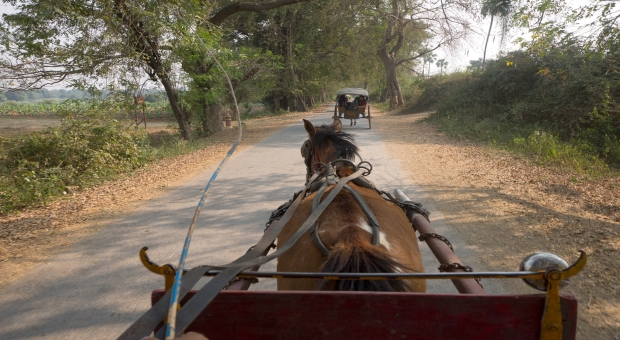

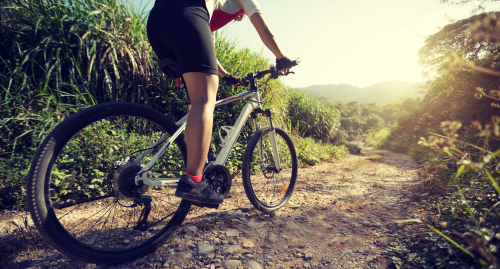
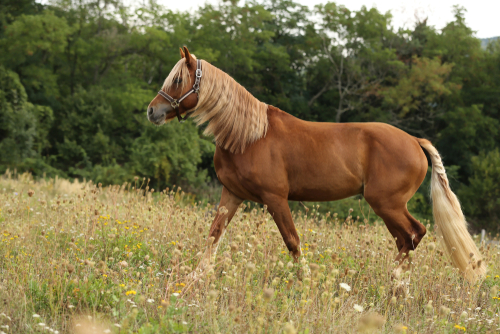

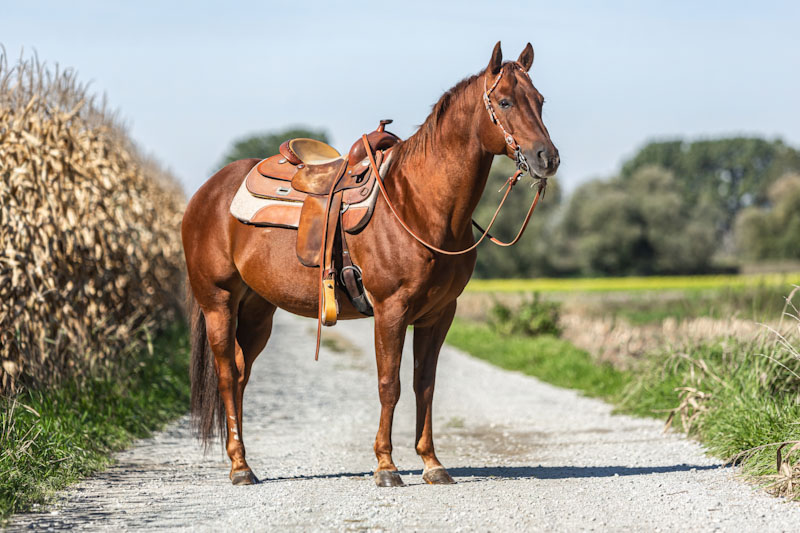
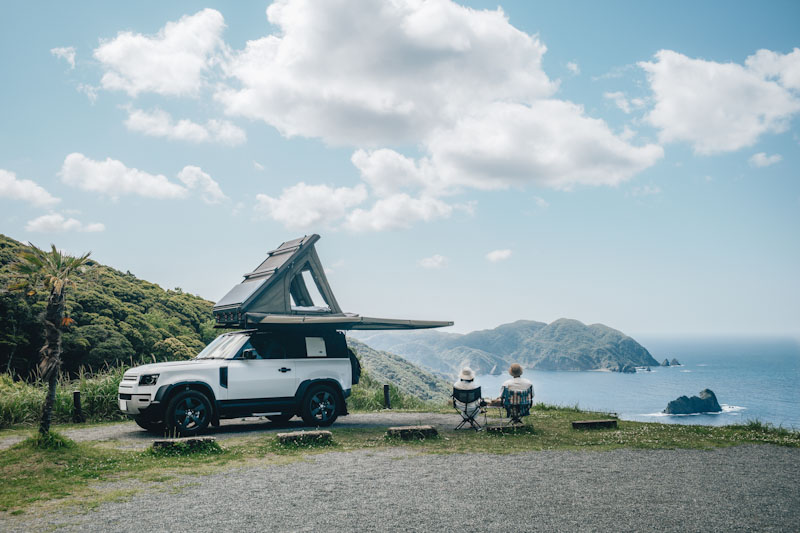
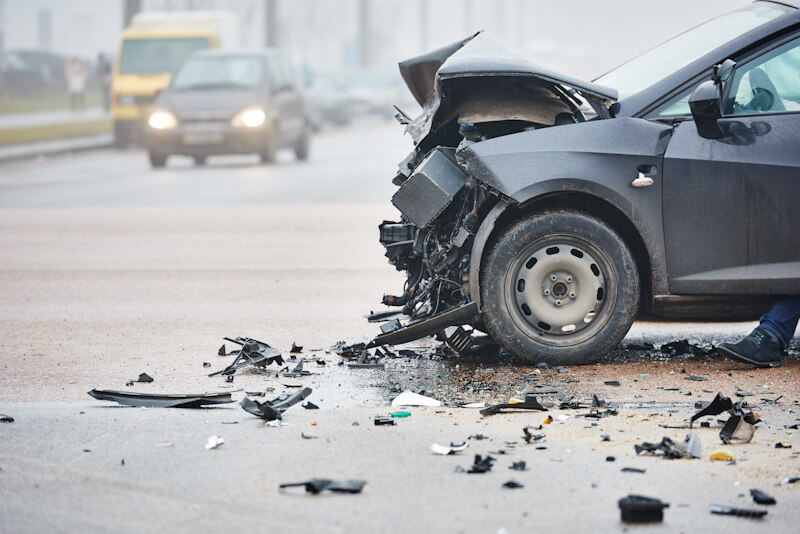



Charles | September 24, 2019
|
Bill — Good logic & history.
PAUL SMITH | September 24, 2019
|
I might add, a dog team, using the same set-up as a dog sled; except using a steerable wagon.
Goats, sheep and dogs can be attached to a hand cart to aid in motation..
Deborah | September 24, 2019
|
We have adult tricycles with a basket on the back axel. We have an electric motor on them now, but I’m building up to where I don’t use it very much up hills. We ride 2-3/4 miles almost every day. Some days it’s a bit farther.
Armin | September 24, 2019
|
While I agree with most of what you say, Bill, unless you’re a farmer that already uses horses or oxen or are Amish or Mennonite most people wouldn’t know one end of a horse from another. Horses and oxen need a veterinarian. Horses need a blacksmith. Very few left. How many even know how to ride a horse? How many saddle makers are left? Horses not really practical for most people in a post-apocalyptical world. How many know how to properly harness a horse? Or even to get a bit into a horse’s mouth without hitting its teeth? Not many I’m guessing. Especially city dwellers living in their bee hives. Good luck becoming part of an Amish or Mennonite community post SHTF. When you say boat, Bill, I’m assuming you’re talking about canoes. The Indians got around quite handily in their birch-bark canoes. As long as you’re in an area that has rivers and lakes. A cargo canoe can carry one heck of a load for a “boat” that light. As for steam engines, where are you going to find one small enough to be practical for your needs? Are we going to commandeer a locomotive and lay more track? LOL! Heck, you may as well be talking about stirling cycle engines. They’d be much more practical post SHTF as they’re a closed-cycle engine but then how to build one or a small enough steam engine in a zero industrial world. Especially when everyone’s primary concern would be survival. Frankly, Bill, I really don’t even want to think about TEOTWAWKI happening as it WOULD be hell on earth and probably far worse than anything we could imagine. It would make the “Mad Max” movies appear as a walk in the park. Much to think about,
Jim Grebel | September 24, 2019
|
When other survivors see that you have a means of transportation, you better be prepared to fight/defend it. You may be killed for your transportation.
Bern Kefer | September 24, 2019
|
Sorry for an editorial comment- but it is Conestoga wagon. To my knowledge- and I live where they used to be made- there is no such thing as a constantanoga wagon.
"Joh | September 24, 2019
|
Finally, someone thinking in reality mode. Thank you Armin. Too many of us are thinking in picnic mode right now. Too much television. If, more likely when, this happens, the devastation will be more than any US citizen can even imagine. Many others around the world live that reality daily but we have only glimpsed it on TV. That reality is so far from us that only a few can just partly fathom how to begin preparing. Of those few who are even trying to prepare, only a tiny percentage are able to get close to the correct preparedness level. And that preparedness isn’t only material readiness, Most of it must be emotional and reality preparedness. You have come the closest to that I’ve seen. Thank You!
Linda Rose | September 24, 2019
|
We farmed with horses for 32 years and my husband much longer as he grew up on a farm. Our first horse was an 800 lb. cross between a Shetland Pony and Quarter horse. We had very little money and my husband made all his harnesses from 30 year old work harnesses that were for a bigger horse. He learned by doing and remembered much of what his grandparents had taught him. he also had to train the horse to pull a cart, plow ; raker; spring tooth, manure spreader and hay mower. That machinery can’t be bought here. We got ours at the local dump where it had been discarded and traded to get certain items that were now being used as lawn ornaments! Horses need their feet trimmed and they need hay, Making hay requires another set of skills most people don’t know today. Also shoeing a horse is not an easy job. Goats, oxen, sheep also need hay and feet trimmed periodically. A dog team might be easier to use but still need harnesses, nails trimmed and food which a team could eat a lot of. We lived 17 years on a farm without a vehicle and rode bicycles 10 miles to town. We drove the horse when going to the woods five miles away to cut fire wood. With no gas for a chain saw the alternative is back breaking work with two men using a cross cut saw. We have lived this way and it is hard even when you know what you are doing. A novice with no experience could well starve while trying to learn pioneer skills. Even a bicycle requires maintenance such as air in the tires via hand pump when there is no electric. You would need a supply of tire patches., hand air pump and spare tires just in case. There is a lot of nostalgia about how our fore fathers lived and how natives lived but reality many were dead before 50 or 60 years. Some who were tough and knew what they were doing lived longer.; Walking and pushing or pulling a cart is the simplest but requires good legs and stamina. If you want to prepare for a disaster now would be a good time to start learning new skills and walk and ride a bike to get in shape.. Forget the horse unless you know what to do with one and how to take care of it!
Karen | September 25, 2019
|
Seems to me riding a bike after SHTF will make you a sitting target . . Really though, anything but walking sets off alarms that we have something worth taking and our location should be searched.
Best to lay low, let the population die off then assess . . But still, other survivors may be adversaries . .
On foot . . quiet . . back alleys . . in the shadows . . Only safe-ish way to get around.
NEED to have 1-2 years of everything stocked up beforehand.
Karin Bruce | September 25, 2019
|
I would think that an inflatable raft/boat might be an option. Assuming that you lived close enough to a water way. But that is just imagination not research.
OldIron | September 25, 2019
|
My buddy a I have reached the same piont animals steam sail and water. Oil is not everwhere so it will be used by few water wheels and wind mills will be used to run machine tools. We will move back to the late 1800’s to about 1925. Unless the world wide population drops by 75% life on this rock goes on andthose that are left will never allow the globalation to happen agine. The dumb and old and the druggy’s die first those that know or where to find books will live. The end of the goggle world will cause the use of the human brain by many and we will move forward and mankind will control tech. not greedy power freaks.
Mike Miller | September 26, 2019
|
Very sound comments. If you think logically,apply what you do know,be willing to learn what you do not to not only survive but thrive.
Bill in Idaho | September 27, 2019
|
Bill, Does Anyone here Know/ Realize Just how much Horses (Or Mules, or Burros, or Jacks, etc.) NEED to eat just to survive.? A full sized horse needs about 1/2 std. bale of roughage – 1/3 legumes (alfalfa) and 2/3 Grass hay – Plus Grain (1-2 Quarts – Oats or corn – and NO GMO) if they are working and active. Shorten these amounts and you have a very tired, weak, sick animal that is of no use to you. Don’t forger the mineral block – and plenty (5 Gals. or so) of pure clean water.
steve bramschreiber | September 30, 2019
|
As to the boat idea….electric motor(s) can get you around as well…take the seemingly endless amount of fold able solar panels out there…use your battery to power your boat and use the panels to charge your battery when it runs down…looping it as the day goes..Plenty of DYI pontoon style boat videos out on YouTube these days…inexpensive and easily powered by an electric motor or two…can hold a bunch of weight as well…you can/could also use wind energy to “power” your pontoon boat if need be. wouldn’t be to difficult to rig a sail system on it I would imagine..or even pedal power(Ala Fred Flintstone)…lots of other options out there!!!!!
Henry | April 4, 2022
|
Several people have mentioned boats, rafts, canoes etc., but I think it is important to mention the safety equipment that you will need on those boats. First, you will need enough Life Jackets for everyone on the boat, and a Life Ring, that has a rope tied around it, in case some falls overboard. Lights, bells and whistles are also needed on your boat, to take it through the Channel, and into the Harbor. These things are needed especially at night, or during a heavy fog, which makes visibility next to impossible, to avoid collisions with other boats, buoys, or running aground. Practice drills such as Man Overboard, to ensure that you can rescue your family member or friend from drowning.
Deborah | December 30, 2019
|
We have electric trikes with baskets. They are battery operated, but you don’t have to use the battery. They have a basket on back where the batteries go, but can easily be take off. We ride as often as we can. Weather permitting.